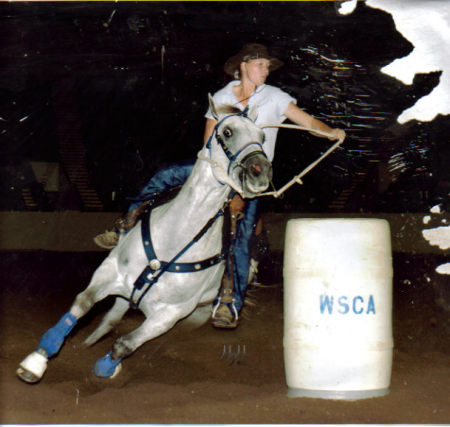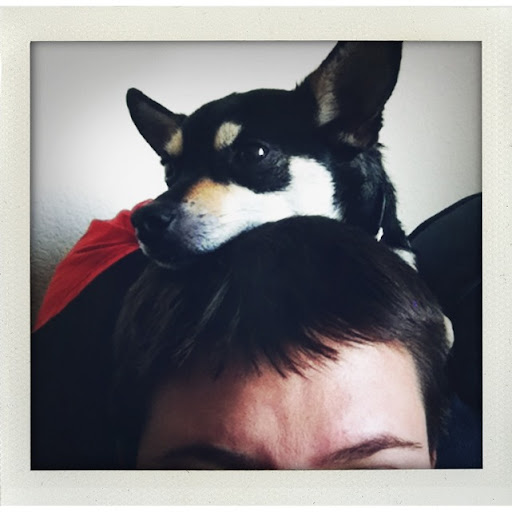Darcy B Wilson
age ~88
from San Diego, CA
- Also known as:
-
- Darcy Dr Wilson
- Scott Wilson
Darcy Wilson Phones & Addresses
- San Diego, CA
- Falmouth, MA
- Boston, MA
- San Francisco, CA
- 8669 La Jolla Scenic Dr, La Jolla, CA 92037 • (858)5870847
- Solana Beach, CA
Us Patents
-
Vaccination And Methods Against Multiple Sclerosis Resulting From Pathogenic Responses By Specific T Cell Populations
view source -
US Patent:6464978, Oct 15, 2002
-
Filed:Apr 29, 1993
-
Appl. No.:08/055006
-
Inventors:Steven W. Brostoff - Carlsbad CA
Darcy B. Wilson - La Jolla CA
Lawrence R. Smith - Cardiff CA
Daniel P. Gold - Del Mar CA
Dennis J. Carlo - Rancho Santa Fe CA -
Assignee:The Immune Response Corporation - Carlsbad CA
-
International Classification:A61K 39395
-
US Classification:4241541, 4241841, 4241851, 4241831, 530300, 530350, 5303879, 5303896, 5303913, 5303917, 435 6, 435 71
-
Abstract:The present invention provides vaccines and a means of vaccinating a mammal so as to prevent or control specific T cell mediated pathologies or to treat the unregulated replication of T cells. The vaccine is composed of a T cell receptor (TCR) or a fragment thereof corresponding to a TCR present on the surface of T cells mediating the pathology. The vaccine fragment can be a peptide corresponding to sequences of TCRs characteristic of the T cells mediating said pathology. The vaccine is administered to the mammal in a manner that induces an immunologically effective response so as to affect the course of the disease. The invention additionally provides specific -chain variable regions of the T cell receptor, designated V6. 2/3, V6. 5, V2, V5. 1, V13 and V7, which are central to the pathogenesis of multiple sclerosis (MS).
-
Human Immune System In Non-Human Animal
view source -
US Patent:56987676, Dec 16, 1997
-
Filed:Oct 16, 1995
-
Appl. No.:8/543449
-
Inventors:Darcy B. Wilson - La Jolla CA
Donald E. Mosier - Del Mar CA -
Assignee:Lidak Pharmaceuticals - La Jolla CA
-
International Classification:A61K 3500
A61K 4800
C12N 1500 -
US Classification:800 2
-
Abstract:Laboratory non-human animals in which the immune system of a donor is induced in and thrives in vivo and expresses the immune response of the donor animal in a recipient non-human animal of a different species than the donor, and wherein malignant immune system cells of the donor can be induced in the recipient non-human animal by injection of non-malignant donor into the recipient are disclosed.
-
Human Immune System In Non-Human Animal
view source -
US Patent:54769965, Dec 19, 1995
-
Filed:May 4, 1993
-
Appl. No.:8/057006
-
Inventors:Darcy B. Wilson - La Jolla CA
Donald E. Mosier - Del Mar CA -
Assignee:Lidak Pharmaceuticals - La Jolla CA
-
International Classification:A61K 3500
-
US Classification:800 2
-
Abstract:Laboratory non-human animals in which the immune system of a human donor is induced in and thrives in vivo and expresses the immune response of the human donor in a recipient non-human animal, and wherein malignant immune system cells of the human donor can be induced in the recipient non-human animal by injection of non-malignant donor cells into the recipient are disclosed.
Resumes

Chief Executive Officer
view sourceLocation:
San Diego, CA
Industry:
Biotechnology
Work:
Membrane Sciences
Chief Executive Officer
Chief Executive Officer

Scientific Director, Member At Torrey Pines Institute For Molecular Studies
view sourceLocation:
3550 General Atomics Ct, San Diego, CA 92121
Industry:
Research
Work:
Torrey Pines Institute For Molecular Studies
Scientific Director, Member at Torrey Pines Institute For Molecular Studies
Scientific Director, Member at Torrey Pines Institute For Molecular Studies

Darcy Wilson
view source
Darcy Wilson
view source
Darcy Wilson
view source
Darcy Wilson
view source
Darcy Wilson
view sourceLicense Records
Darcy Wilson
Address:
Woodshole, MA 02543
License #:
79208 - Expired
Issued Date:
Aug 1, 1972
Expiration Date:
Jan 26, 1981
Type:
Broker
Name / Title
Company / Classification
Phones & Addresses
Scientific Director
National Multiple Sclerosis Society
Individual/Family Services Social Services
Individual/Family Services Social Services
8840 Complex Dr, San Diego, CA 92123
Plaxo

Darcy Wilson
view sourceFlickr

Darcy Wilson
view source
Darcy Waldron Wilson
view source
Darcy Huffman Wilson
view source
Darcy Wilson
view source
Darcy Emery Wilson
view source
Darcy Wilson
view source
Darcy Wilson
view source
Darcy Wilson
view sourceClassmates

Darcy Berget (Wilson)
view sourceSchools:
New Richmond High School New Richmond WI 1985-1989
Community:
Steve Young, Renae Farley

Darcy Wilson
view sourceSchools:
Lambert High School Churchill Falls Peru 1978-1980
Community:
Ken English, Rolf Huitfeldt, Quentin Reider

Darcy Wilson
view sourceSchools:
Stelly's High School Victoria Saudi Arabia 2000-2004
Community:
Paula Krevesky, Melanie Bolster, Nancy Davies

Darcy Hedberg (Wilson)
view sourceSchools:
Northern High School Port Huron MI 1978-1982
Community:
Philip Miller, Howard Collins, Doug Richardson

Darcy Wilson (Pettigrew)
view sourceSchools:
Westchester High School Westchester CA 1970-1974
Community:
Deanna Dede

Darcy Wilson
view sourceSchools:
New Bethlehem High School New Bethlehem PA 1932-1936
Community:
Samuel Shumaker

Darcy Wilson
view sourceSchools:
Redmond High School Redmond OR 1991-1995
Community:
Julie Gregor, Tia Mansfield, Olivia Elliott

darcy wilson, Crayton Mid...
view sourceGoogleplus

Darcy Wilson
Work:
Peninsula Community Center
Education:
Johns Hopkins University

Darcy Wilson
Lived:
San Francisco, CA
Work:
San Francisco Police Department - Fingerprint Technician I

Darcy Wilson

Darcy Wilson
Tagline:
Paramedic AAS, Paramedic & EMT-B in LC Primary Instructor

Darcy Wilson

Darcy Wilson

Darcy Wilson

Darcy Wilson
Youtube
Get Report for Darcy B Wilson from San Diego, CA, age ~88













